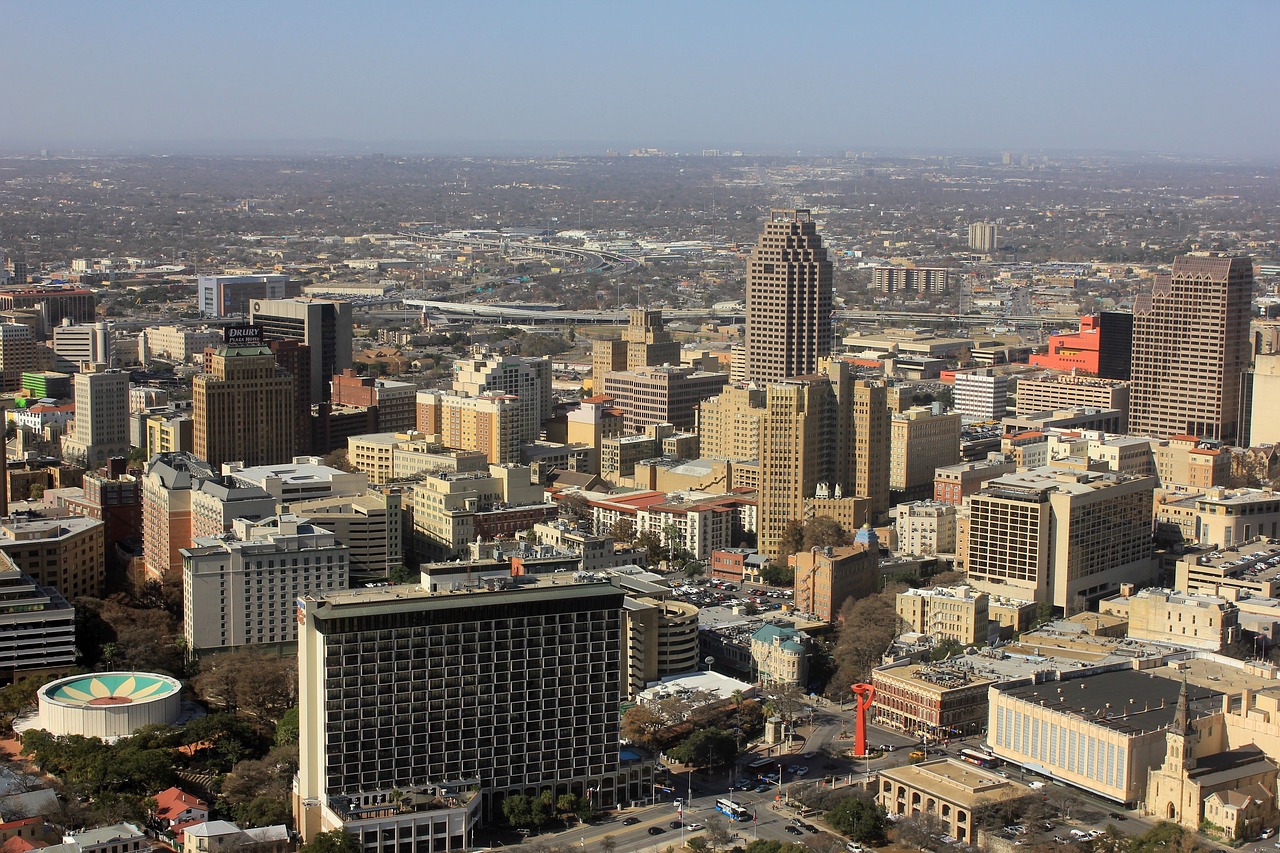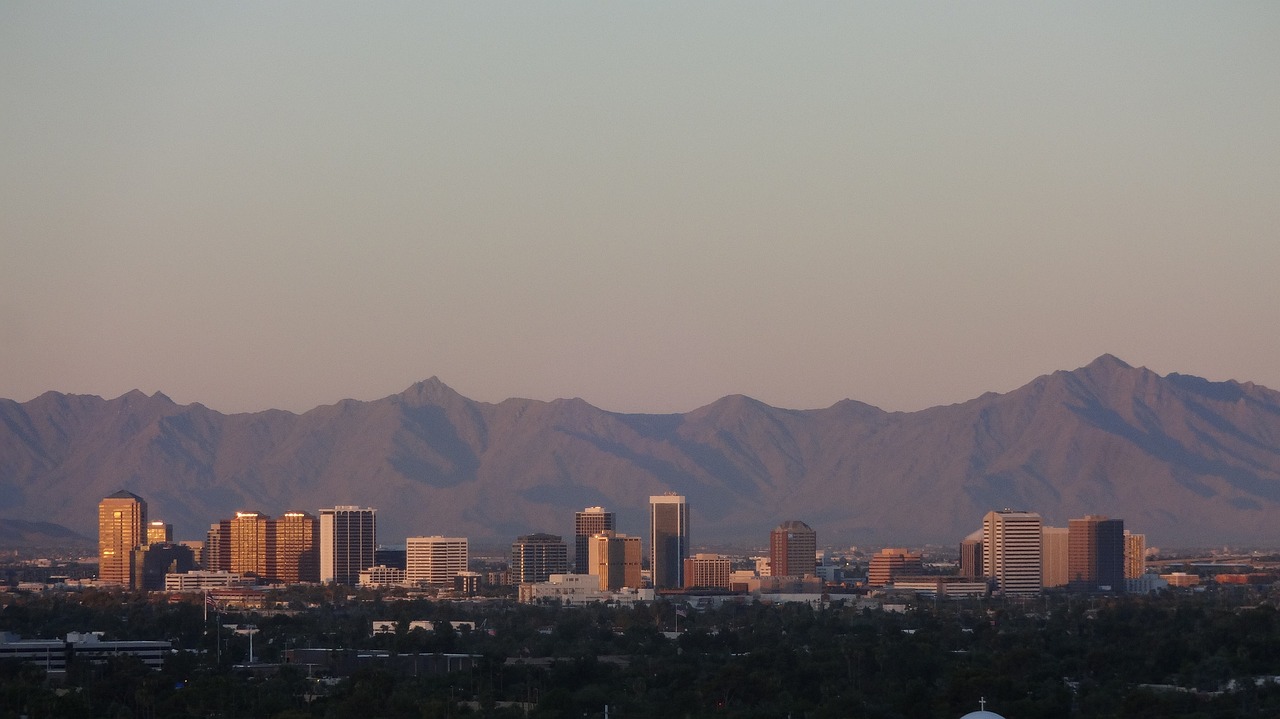
Finding the perfect spot for a vacation can be hard. North Cascades National Park is a hidden gem in Washington. This guide shows you why it’s worth visiting, from its mountains to its wildlife.
Get ready for an adventure!
Key Takeaways
- North Cascades National Park in Washington has over 300 glaciers, more than any U.S. park outside of Alaska. It features rugged mountains and diverse wildlife, including grizzly bears and gray wolves.
- The park is home to unique flora like alpine larch trees and carnivorous plants. It supports a variety of ecosystems from lush conifer forests to alpine landscapes.
- Human history in the park dates back around 11,000 years with Paleoindians, followed by Native American tribes. In later centuries, Anglo-European explorers arrived for trapping, mining, and logging.
- Outdoor activities include hiking on over 400 miles of trails, climbing among 300 peaks over 6,000 feet high, and photography at scenic spots like Diablo Lake Overlook.
- Conservation efforts focus on maintaining air and water quality while addressing climate change impacts such as glacier retreat.
Geography and Geology

North Cascades National Park is a land of rugged mountains, deep valleys, and over 300 glaciers. Its geology tells the story of ancient rock formations and the shaping forces of ice and water.
Mountain Ranges
The North Cascades are full of towering mountain ranges. These peaks hold the title for some of the most rugged terrain in the Cascade Mountains. They stretch far and wide, creating a stunning view that captures anyone’s eye.
You’ll see sharp ridges, high spires, and deep valleys carved out by ice and time.
Among these giants, you find the famous Picket Range and Eldorado Peak. Each area offers its own unique adventure. The landscape changes with every turn, from snow-covered tips to rocky slopes filled with color in spring.
Hikers and climbers come from all over to test their skills or just take in the beauty of these ancient rocks.
Glaciers and Water Features
Moving from the towering mountain ranges, we find North Cascades National Park rich in glaciers and water features. This park homes over 300 glaciers. That’s more than any U.S. park outside of Alaska! These ice giants feed rivers and lakes, creating a stunning alpine landscape.
Among these waters is Ross Lake, a standout feature. It stretches over 20 miles and offers breathtaking views. Here, visitors can enjoy kayaking or fishing in clear waters surrounded by rugged mountains.
Trails along the lake make for perfect hiking spots too, where one might spot wildlife or unique plants near the water’s edge.
Ecological Diversity
The park is home to a rich variety of plants and animals, creating a diverse ecological tapestry. From lush conifer forests to the alpine landscape, the region supports numerous bird species and serves as a sanctuary for wildlife.
Flora of the Park
North Cascades National Park is a haven for nature lovers, boasting a rich tapestry of plant life. The diverse range of elevations and climates fosters an incredible variety of flora.
- Western hemlock and Douglas fir trees dominate the lower forested valleys, providing lush, green landscapes that stretch as far as the eye can see.
- Higher up, mountain meadows burst with wildflowers in spring and summer. Here, colorful displays of lupines, paintbrushes, and asters create natural mosaics.
- Alpine larch trees are a rare sight found in some of the park’s higher reaches. Their golden needles light up the landscape in autumn.
- Dense stands of Pacific silver fir populate mid-elevation slopes. These trees add to the park’s dense coniferous forests.
- Near streams and wet areas, you’ll find skunk cabbage and devil’s club thriving. Both plants are known for their distinctive smells and appearances.
- Cedar trees line many of the park’s rivers, offering cool shade to travelers and habitats for wildlife.
- Mosses and lichens cover rocks and tree trunks throughout the park. They create miniature worlds within themselves.
- In boggy regions, carnivorous plants like sundews surprise visitors. These small but fascinating plants capture insects for nutrients.
Each plant species plays a role in supporting the park’s ecosystem. Together, they form a complex web that sustains all forms of life here.
Fauna and Wildlife
The park is home to a diverse range of wildlife, adding to the natural beauty of the area. Here’s what you can expect to see while exploring North Cascades National Park:
- The park’s dense conifer forests are inhabited by a variety of bird species, including golden eagles, bald eagles, and peregrine falcons.
- Grizzly bears and gray wolves roam the wilderness, contributing to the park’s status as a wildlife sanctuary.
- The Cascade Mountains provide a habitat for unique animal species such as mountain goats, marmots, and pikas.
- Visitors may catch glimpses of deer, elk, and black bears while exploring the park’s trails or scenic drives.
- The remote community of Stehekin also serves as a haven for various avian species and is an excellent spot for birdwatching enthusiasts.
These wildlife sightings add another layer of awe-inspiring experiences for nature lovers visiting the park.
Human History and Cultural Significance
The park holds a rich history with evidence of Paleoindians and Native American presence. Later, Anglo-European exploration brought mining, logging, and dam construction to the region.
Paleoindians and Native Americans
Paleoindians, the earliest human inhabitants of North Cascades National Park, first arrived around 11,000 years ago. They survived by hunting large game and gathering wild plants. As for Native Americans, various tribes like the Nlaka’pamux, Okanogan, and Upper Skagit have lived near the park for thousands of years.
The land provided them with food from hunting, fishing in rivers and lakes like Ross Lake and Diablo Lake, and gathering berries.
These indigenous peoples used their knowledge to live sustainably with nature. Their presence has left a historical legacy that enriches the park’s cultural significance today. Moving forward to Anglo-European exploration in later centuries transformed this land even further.
Anglo-European Exploration
Anglo-European explorers first came to North Cascades National Park in the late 18th century. Trappers and fur traders, like Alexander Ross, ventured into the region in search of beavers for their luxurious pelts.
Later, gold prospectors flocked to the area during the Fraser River Gold Rush of 1858. Explorers and adventurers were drawn by the rugged beauty and abundant natural resources.
James McMillan’s expedition in 1859 marked one of the most significant European explorations of this wilderness. The survey leader spent four months mapping thousands of square miles, providing key geographical insights that would later guide further exploration and settlement initiatives in Washington State.
During this era, settlers established homesteads in Stehekin Valley and Chelan Lake, shaping a new chapter in North Cascades’ history. However, it wasn’t until 1914 that notable conservation efforts began with Stephen Mather envisioning its protection as a national park.
Mining, Logging, and Dam Construction
Mining, logging, and dam construction have shaped the human history of North Cascades National Park. In the early 20th century, gold and silver mining boomed in the area, leaving behind remnants of old mines and cabins that visitors can explore today.
The activity declined over time due to diminishing returns, environmental regulations, and the establishment of the park.
Logging was also significant in this region. In the mid-20th century, several dams were constructed across rivers for hydroelectric power generation. Ross Lake was created by damming up parts of three rivers – Skagit River among them – altering natural landscapes but providing clean energy to nearby communities.
However, these activities led to concerns about their impact on watersheds and wildlife habitats which resulted in stricter environmental regulations being imposed.
Outdoor Activities and Attractions
Explore the park’s extensive network of hiking trails, where you can immerse yourself in the serene wilderness and take in breathtaking mountain vistas. Conquer the heights through mountaineering and climbing, or opt for a more relaxed experience with scenic drives and photography opportunities amidst the stunning natural landscapes.
Hiking and Camping
North Cascades National Park offers a range of outdoor activities for adventure seekers and nature enthusiasts. Here’s what you can enjoy when hiking and camping in this beautiful wilderness:
- Explore over 400 miles of trails that wind through the pristine alpine landscape, offering breathtaking views of glaciers, lakes, and conifer forests.
- Immerse yourself in the tranquility of backcountry camping where you can experience the remote beauty of the park, away from the hustle and bustle of everyday life.
- Encounter diverse wildlife such as grizzly bears, gray wolves, and a variety of bird species during your outdoor sojourns.
- Engage in birdwatching as the park is home to more than 200 species of birds, providing ample opportunities for wildlife enthusiasts and photographers alike.
Now let’s delve into the wonders of Mountaineering and Climbing within North Cascades National Park.
Mountaineering and Climbing
North Cascades National Park offers exciting opportunities for mountaineering and climbing, complementing its numerous hiking and camping options. Whether you’re a seasoned climber or new to the sport, the park’s rugged terrain and alpine landscapes provide a challenging and rewarding experience.
- Alpine Challenges: The park features more than 300 peaks over 6,000 feet in elevation, including iconic summits like Mount Shuksan and Forbidden Peak. These rocky spires and glaciated peaks present an ideal setting for technical climbing expeditions.
- Climbing Routes: With over 400 established rock and ice climbing routes, enthusiasts can find diverse challenges suitable for different skill levels, from moderate alpine routes to extreme big wall climbs. Notable areas include Washington Pass, Liberty Bell Group, and Boston Basin.
- Mountaineering Education: For those looking to develop their mountaineering skills or seeking guided experiences, various organizations offer training courses and professionally led climbs coordinated with experienced guides in the region.
- Safety Precautions: Due to the rugged nature of the terrain and unpredictable weather conditions in the North Cascades, climbers must be well-equipped with essential gear and possess strong technical proficiency before embarking on their adventure.
- Wilderness Permits: As many climbing areas are within designated wilderness zones, visitors should obtain permits in advance as part of efforts to manage human impact on these delicate ecosystems. These permits also ensure safety measures are in place for all climbers traversing through isolated backcountry locations.
- Conservation Ethics: Mountaineers and climbers are encouraged to engage in responsible recreation practices by adhering to leave-no-trace principles while respecting wildlife habitats and natural features during their ascents.
- Local Services: Nearby communities such as Marblemount, Stehekin, or Mazama offer essential amenities for climbers including lodging options, gear rentals, dining establishments as well as guide services for those seeking local expertise.
Scenic Drives and Photography
The North Cascades National Park offers breathtaking views that are perfect for capturing stunning photographs. The park also features scenic drives that allow visitors to immerse themselves in the beauty of the landscape. Here’s what you can enjoy:
- Cascade River Road: This 23-mile road winds through dense forests and offers spectacular views of snow-capped peaks, making it a paradise for photographers and nature enthusiasts.
- North Cascades Highway: Known for its breathtaking vistas, this highway takes you through the heart of the park, offering numerous pullouts for photo opportunities and showcasing the park’s diverse natural beauty.
- Diablo Lake Overlook: Stop here to capture the mesmerizing turquoise waters against a backdrop of rugged mountains – a sight that will leave any photographer in awe.
- Ross Lake Overlook: With expansive views of Ross Lake and surrounding mountains, this overlook provides an ideal setting for landscape photography.
- Picture Lake: Framed by Mount Shuksan, this iconic spot is a must-visit for photographers seeking reflections of majestic mountain peaks on the tranquil waters.
- Newhalem Overlooks: These viewpoints offer panoramic scenes of lush greenery, cascading waterfalls, and glimpses of wildlife, providing ample opportunities for capturing nature at its finest.
Park Management and Conservation Efforts
Park management and conservation efforts focus on maintaining air and water quality, as well as addressing climate change impacts. Discover the essential steps taken to ensure the preservation of this natural wonder by exploring our full blog.
Maintaining Air and Water Quality
To preserve the natural air and water quality in North Cascades National Park, strict measures are in place. Emission controls for motor vehicles and restrictions on campfires help keep the air clean.
The park also closely monitors water sources to ensure they remain free from pollution, safeguarding the health of its diverse wildlife, plants, and ecosystems. This commitment to environmental protection ensures that visitors can enjoy the park’s pristine beauty for years to come.
Conservation efforts focus on reducing carbon emissions to combat climate change impacts like glacial retreat. Scientific research is conducted within the park to understand these changes better, allowing for adaptive management strategies.
By prioritizing sustainable practices and minimizing human impact, North Cascades National Park remains a haven of unspoiled wilderness with unparalleled air and water quality amid its rugged beauty.
Addressing Climate Change Impacts
The North Cascades National Park is actively addressing the impacts of climate change. The park’s glaciers have shrunk by approximately 40% since 1850, impacting water resources in the region.
Rising temperatures and altered precipitation patterns are affecting wildlife habitats and increasing the risk of forest fires. To combat these challenges, the park has implemented measures to monitor and mitigate these effects, such as ongoing research on glacial recession and developing strategies for managing changing ecosystems.
Additionally, educational programs highlight the importance of reducing carbon emissions and promoting sustainable practices among visitors to help safeguard the park’s ecological diversity.
Visitor Tips and Recommendations
Plan your visit during the summer months for the best weather and accessibility to trails, and don’t miss out on exploring the breathtaking Ross Lake and remote community of Stehekin.
For more insider tips and recommendations, delve into our blog for a memorable trip to North Cascades National Park!
Best Times to Visit
Summer, from June to September, is the best time to visit North Cascades National Park. During this period, the weather is most favorable for outdoor activities like hiking and camping with temperatures ranging between 50°F-80°F (10°C-27°C).
The snow starts melting during late June, unveiling picturesque alpine meadows blanketed with a stunning array of wildflowers. This season also offers prime conditions for enjoying the park’s various lakes while engaging in water-based activities such as kayaking and fishing.
Additionally, summer months provide ample daylight hours ideal for exploring the diverse trails that wind through the park’s wilderness.
Fall also presents a beautiful time to visit as crowds thin out and vibrant fall foliage adorns the landscape. However, it’s essential to be prepared for cooler temperatures and potential early snowfall in higher elevations.
Spring can be less crowded than summer and allows visitors to witness nature awakening after winter but comes with similar temperature considerations as fall.
Key Locations and Trails
North Cascades National Park is a paradise for outdoor enthusiasts, offering breathtaking landscapes and diverse trails. Here are some must-visit locations and trails within the park:
- Cascade Pass Trail – This trail offers stunning mountain vistas, alpine meadows, and the chance to witness unique wildlife like marmots and pikas.
- Diablo Lake Trail – Known for its vibrant turquoise waters, this easy trail provides awe-inspiring views of surrounding peaks and glaciers.
- Maple Pass Loop – A moderate hike leading to panoramic views of golden larches in the fall and snow-capped mountains in the distance.
- Ross Lake – Explore this expansive reservoir by hiking along its shorelines or taking a scenic boat tour to marvel at the rugged beauty of the North Cascades.
- Stehekin Valley Trail – Accessible by boat, this peaceful trail winds through lush forests and tranquil valleys, showcasing the park’s serene wilderness.
- Hidden Lake Lookout Trail – A challenging yet rewarding trek culminating in an old fire lookout with jaw-dropping views of hidden alpine lakes and rugged peaks.
- Thunder Knob Trail – Offering a short but steep hike leading to a lookout with breathtaking views of Diablo Lake and its surroundings.
- Sahale Arm Trail – Ascend through subalpine meadows on this demanding yet incredibly scenic route, providing sweeping mountain vistas as your reward.
Safety Guidelines
When exploring North Cascades National Park, it’s important to be prepared for the remote and wild environment. Here are some safety guidelines to ensure a secure and enjoyable experience:
- Stay on designated trails to avoid getting lost or disturbing delicate ecosystems.
- Carry bear spray and know how to use it in case of a grizzly bear encounter.
- Be aware of potential wildlife encounters, such as gray wolves, and keep a safe distance.
- Check weather forecasts before setting out and be prepared for sudden changes in mountain weather.
- Pack enough food, water, and essential gear for your trip, including a first aid kit.
- Inform someone of your plans and expected return time if venturing into more secluded areas.
These simple precautions can help ensure a safe and memorable visit to this stunning wilderness.
Conclusion
North Cascades National Park offers a breathtaking wilderness experience. From rugged mountains to icy glaciers and serene lakes, the park’s natural beauty is unparalleled. With diverse wildlife and outdoor activities, it’s an ideal destination for nature lovers and adventure seekers alike.
Whether hiking through ancient forests or marveling at cascading waterfalls, every moment in this ecological sanctuary is filled with wonder. North Cascades National Park truly stands as a testament to the importance of conservation efforts in preserving our natural heritage for generations to come.
FAQs
1. What is North Cascades National Park?
North Cascades National Park is a stunning area in Washington State. It features rugged mountains, deep valleys, and beautiful lakes. The park covers over 600,000 acres of wilderness, making it a great place for outdoor adventures.
2. What activities can I do at North Cascades National Park?
At North Cascades National Park, you can hike on many trails, go camping under the stars, or enjoy birdwatching among diverse wildlife. You can also fish in clear rivers or take pictures of breathtaking scenery.
3. When is the best time to visit North Cascades National Park?
The best time to visit is during summer when most trails are open and accessible. However, fall offers colorful leaves while spring brings wildflowers blooming across meadows.
4. Are there any facilities available in the park?
Yes! North Cascades has visitor centers that provide maps and information about hiking routes and safety tips. There are campgrounds with restrooms too; however, some areas may not have services so plan ahead!







Leave a Reply